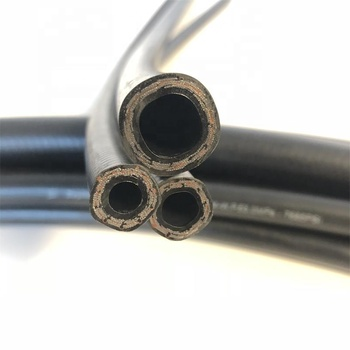335345435
Dec . 05, 2024 14:39 Back to list
OEM Fuel Hose Manufacturing and Supply Chain Overview for Industry Standards
Understanding OEM Fuel Hose Factories A Comprehensive Overview
Original Equipment Manufacturer (OEM) fuel hoses are integral components in various vehicles, ensuring that fuel is delivered from the tank to the engine efficiently and safely. The manufacturing of these hoses involves a blend of advanced technology, stringent quality control, and a thorough understanding of both automotive regulations and customer needs. In this article, we will delve into the critical aspects of OEM fuel hose factories, their production processes, and the importance of quality assurance in this industry.
The Importance of Fuel Hoses
Fuel hoses play a vital role in the performance and safety of vehicles. They must withstand high temperatures, exposure to chemicals, and pressurized fuel. In this context, OEM fuel hoses are designed to meet or exceed specific regulatory standards set by automotive manufacturers, ensuring reliability and durability. Unlike aftermarket options, OEM hoses are tailored to fit specific vehicle models, which guarantees a proper fit and optimal performance.
Production Process in OEM Fuel Hose Factories
The production of OEM fuel hoses involves several complex stages, starting from material selection to final testing. The primary materials used in the manufacture of fuel hoses include rubber compounds, thermoplastic elastomers (TPEs), and reinforced materials, which are chosen based on their resistance to fuel, temperature fluctuations, and mechanical stresses.
1. Material Selection The first step in the manufacturing process is selecting high-quality materials that meet industry standards. Suppliers often provide different grades of rubber and plastic compounds, which are then tested for fuel resistance and durability.
2. Extrusion Once the materials are selected, they are fed into extrusion machines where they are shaped into hoses. This stage requires precise control of temperature and pressure to ensure that the hoses are uniform and free from defects.
oem fuel hose factories

3. Reinforcement Many OEM fuel hoses require reinforcement to withstand pressure and temperature extremes. This can be achieved through the addition of fabric or wire mesh during the extrusion process, enhancing the structural integrity of the hose.
4. Cutting and Assembly After extrusion and reinforcement, the hoses are cut to the necessary lengths and assembled with fittings and connectors. This step is crucial as it determines how well the hose will integrate with the vehicle's fuel system.
5. Testing and Quality Assurance Perhaps the most critical stage in the production of OEM fuel hoses is quality assurance. Factories conduct rigorous testing to evaluate the hoses under various conditions, including pressure testing, temperature cycling, and fuel compatibility tests. These assessments ensure that each hose meets the manufacturer's specifications and complies with safety regulations.
Regulatory Compliance and Industry Standards
OEM fuel hose factories must adhere to strict regulations and industry standards, such as those set by the Society of Automotive Engineers (SAE) and International Organization for Standardization (ISO). Compliance with these regulations is essential for ensuring the safety and performance of the hoses. Manufacturers are required to maintain documentation and transparency in their production processes, which helps in traceability and accountability.
Conclusion
In conclusion, OEM fuel hose factories play a crucial role in the automotive industry, providing essential components that ensure the efficient and safe operation of vehicles. With a focus on quality, rigorous testing, and adherence to industry standards, these factories contribute significantly to vehicle reliability. As the automotive landscape continues to evolve with advancements in technology and an increasing focus on environmental sustainability, OEM fuel hose manufacturers will need to adapt to meet new challenges and expectations. Ultimately, the commitment to quality and safety will remain paramount in the production of OEM fuel hoses, ensuring the trust of manufacturers and consumers alike.
-
SAE 100 R17 Black Smooth Cover Hydraulic Hose
NewsMar.07,2025
-
SAE 100 R17 Black Smooth Cover Hydraulic Hose
NewsMar.07,2025
-
SAE 100 R17 Black Smooth Cover Hydraulic Hose
NewsMar.07,2025
-
SAE 100 R17 Black Smooth Cover Hydraulic Hose
NewsMar.07,2025
-
SAE 100 R17 Black Smooth Cover Hydraulic Hose
NewsMar.07,2025
-
steel wire braided hydraulic hose
NewsMar.07,2025



